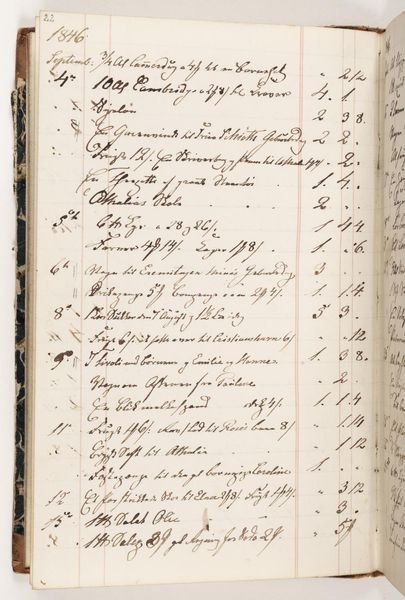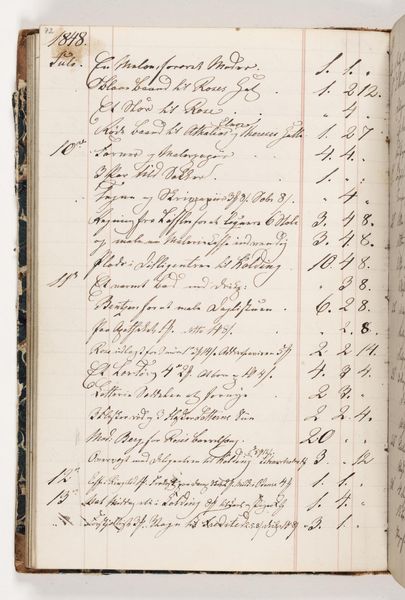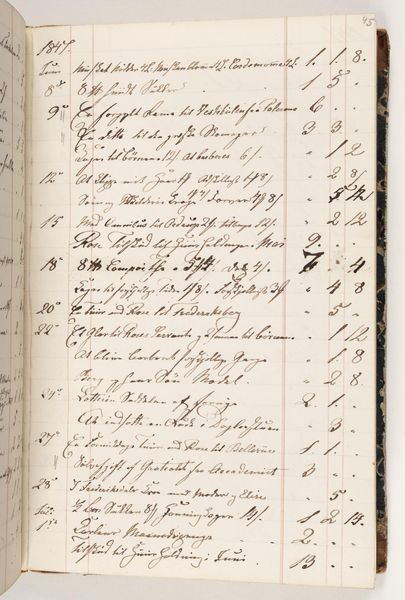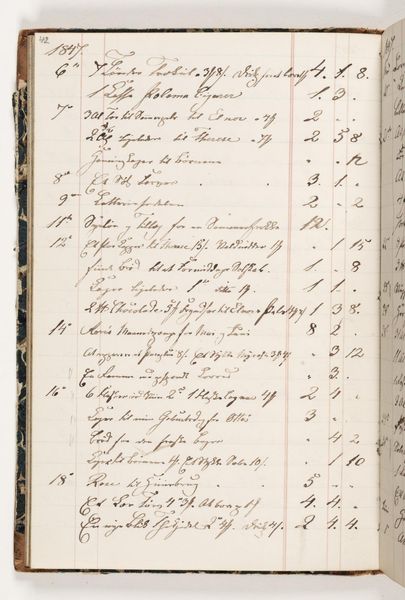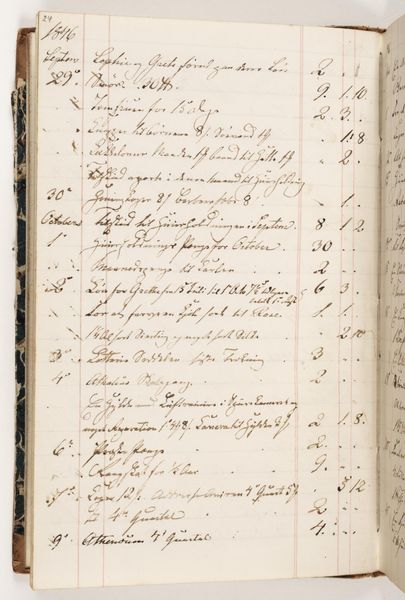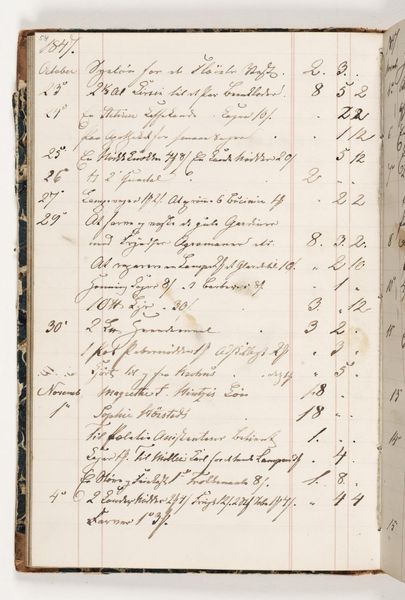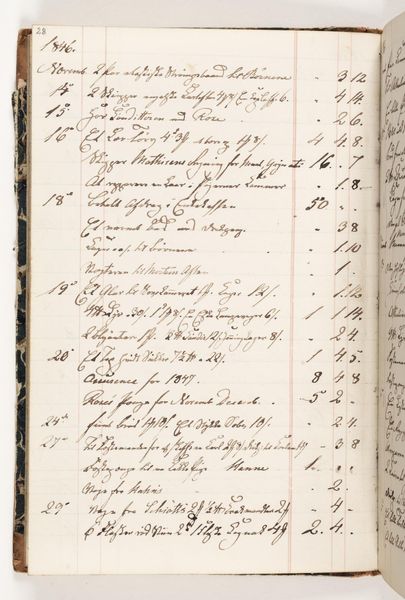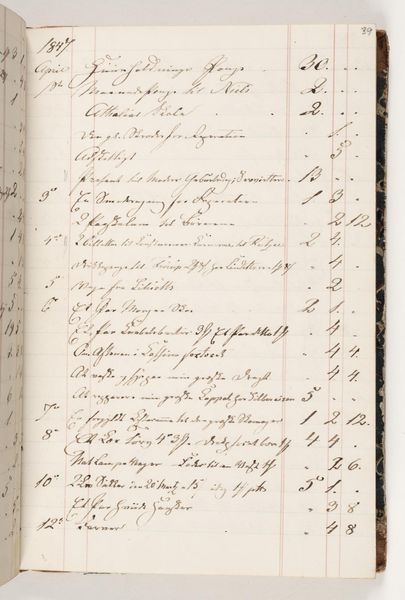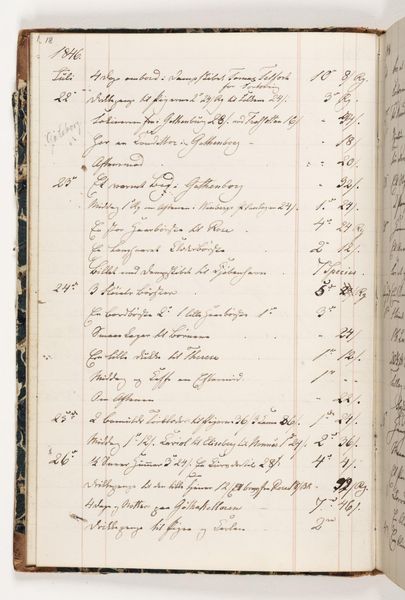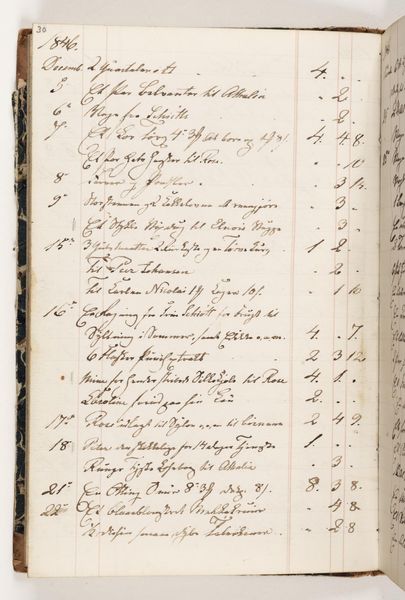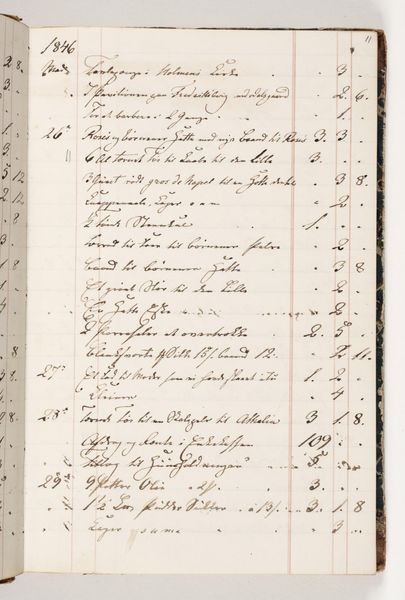
drawing, paper, ink
#
drawing
#
paper
#
ink
#
genre-painting
Dimensions: 200 mm (height) x 130 mm (width) (bladmaal)
Curator: So, here we have "Regnskab 1848", a drawing made with ink on paper by Martinus Rørbye. It's held at the SMK, Statens Museum for Kunst. Editor: Wow, just looking at it, I feel a strange mix of…intimacy and detachment? It’s obviously some kind of accounting ledger, right? All those numbers meticulously handwritten—it makes me think of someone hunched over a desk, totally absorbed. Curator: Precisely. This isn’t just a ledger; it’s a portal. It offers us insights into daily life in 1848, but more importantly, it reveals the mundane backdrop of a revolutionary year in Europe. We see evidence of capitalism intersecting with burgeoning social and political upheaval. The act of recording expenditures becomes an act of witnessing history. Editor: I get that. I mean, those entries, even without fully understanding the language, they whisper stories, right? Like tiny clues. Lamp oil next to... quartering of something? Someone was budgeting in a time of change! Curator: Yes! And let's consider Rørbye himself. Though primarily known for his Romantic landscapes, here he turns his observant eye towards domestic economy. The choice of ink on paper – simple, practical – underscores the document’s functionality. But that meticulous detail… elevates it. This resonates deeply with the rise of social realism within genre painting during the period. Editor: Elevates it, yeah! There's something almost meditative about it. It’s proof of existing, paying bills, making sure the lamps are lit… ordinary and timeless. Plus, I’m obsessed with old handwriting! Curator: It humanizes a specific historical moment. Think about the socio-economic anxieties prevalent at the time. Labor unrest, growing class disparities – each meticulously recorded purchase is a microcosm of larger systemic issues. Editor: And isn't there a tension in that obsessive recording? Trying to control, trying to make sense... which is maybe what artists were doing back then and art is doing right now, maybe always? It makes you think, doesn’t it? This ordinary ledger from an unordinary time. Curator: Indeed, this reminds us of how interconnected the personal and political really are, even the act of buying lamp oil is imbricated in broader power structures and histories of resistance. Editor: Totally! It's more than a ledger; it's a mirror, showing us the ordinary reflections of revolutionary times. Thanks!
Comments
No comments
Be the first to comment and join the conversation on the ultimate creative platform.
